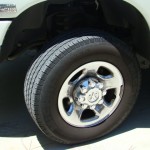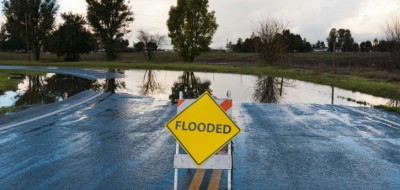 One of the deadliest weather events in the country is the flash flood. Each year these unbelievably quick developing floods, and flooding in general, claim about one hundred lives. Brought on by sudden heavy rain falls, an otherwise peaceful scene can be turned into a deadly water flow washing down a mountainside.
One of the deadliest weather events in the country is the flash flood. Each year these unbelievably quick developing floods, and flooding in general, claim about one hundred lives. Brought on by sudden heavy rain falls, an otherwise peaceful scene can be turned into a deadly water flow washing down a mountainside.
Then there are areas in the country that experience flooding from excessive spring rain and winter run-off from time to time. These often cover low laying roadways and sometimes wash out bridges as well as buildings and other low elevation structures. Regardless of what type of flooding you may run into, extreme caution is very important.
So let’s look at some general tips for dealing with such extreme weather conditions.
When flooding conditions are encountered, try to seek higher ground, and if possible, hold up there. If you come upon a section of roadway that is flooded, do not drive through it if there is another option. If you must cross it, observe other vehicles to determine the depth of the water. Be sure there are no downed electrical lines in the water. Depending on the type of RV you are traveling in, a safe still water maximum depth must be established. That figure should not exceed much more than about half the height of your wheel/tire radius. For example, a 22.5” wheel with an 80 series tire, would be about 14” or so. A 15” wheel with a 70 series tire may be about 10”. Drive slowly and do not stop.
In addition to the water depth, there is a danger that the roadway below may be eroded or starting to collapse. There is no way to accurately determine the road condition other than to observe other vehicles reactions while crossing.
Now the above referred to navigating through relatively still water. If the water is moving at any speed across the roadway, these depths should not be considered and may be reduced to half of that as the vehicle could easily lose control and be pushed from its path. Items also can be carried in the water rush and pose as an additional hazard.
So, if you are in an area where a flood watch has been issued, take immediate precautions and seek high ground. Do not camp in low elevation locations. Avoid any areas that are near any mountain washes. If a flood watch is upgraded to a warning, hold up in the highest ground you can find. Do not travel unless you have no alternative.
Early warning is one of the best defenses when facing severe weather events. Monitor your local weather broadcasts and consider getting an automatic “First Alert” or “NOAA Radio” to keep you safe and informed.





